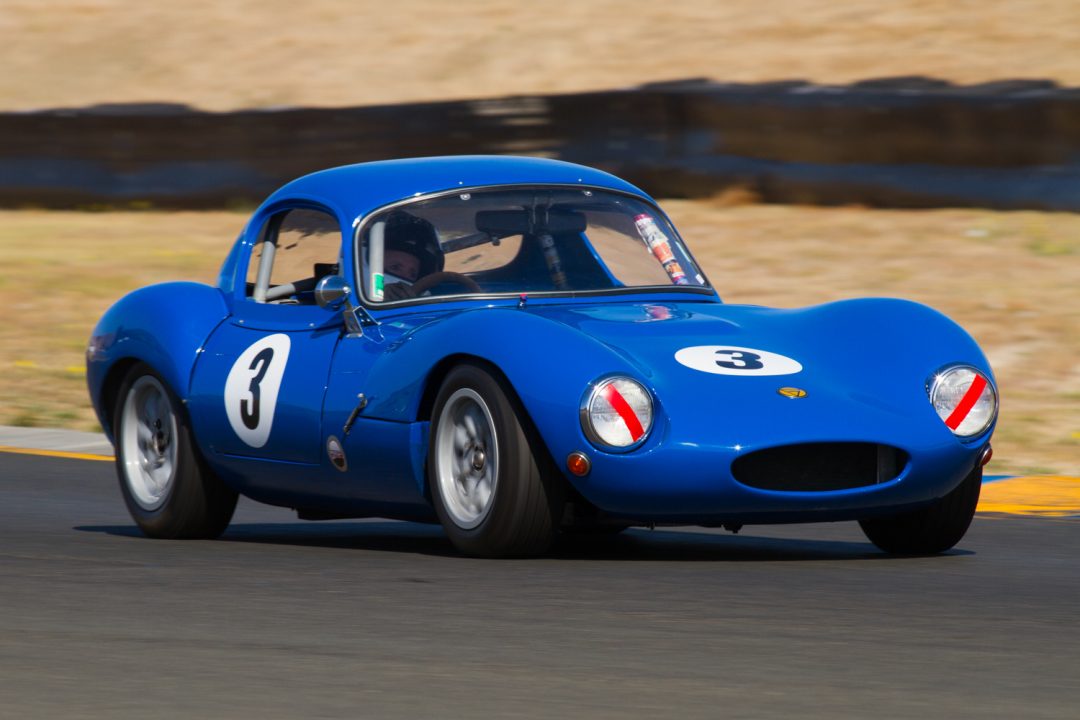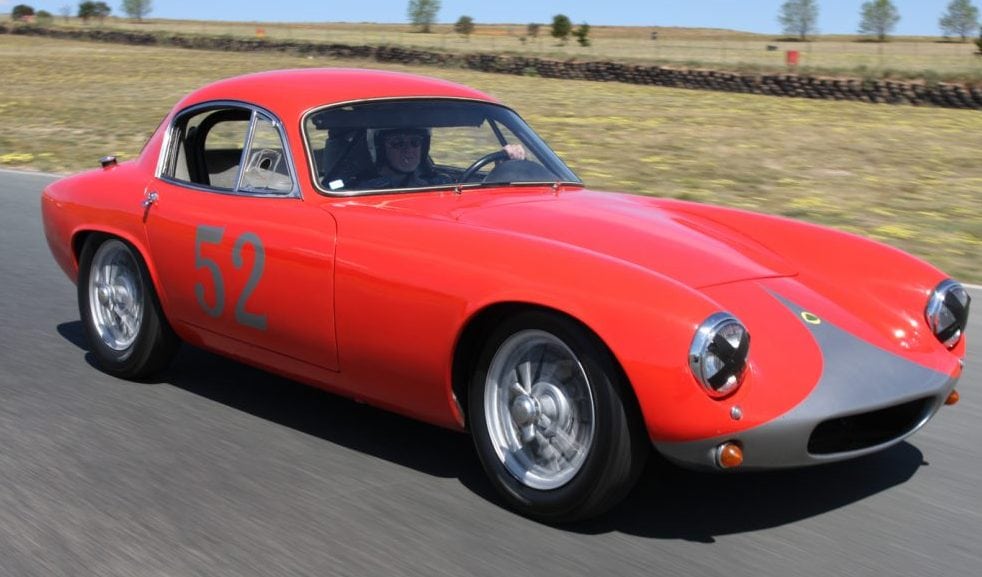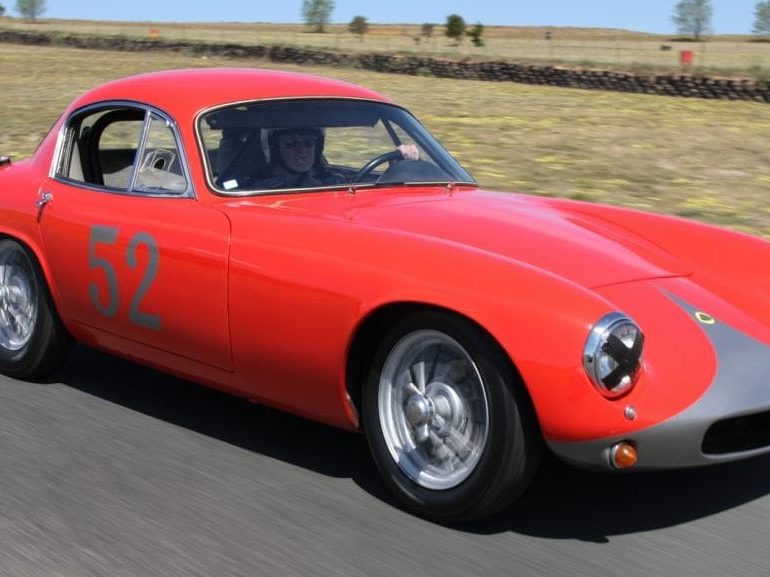The under 2-liter Grand Touring (GT) cars have always had a place to compete within the ever-changing regulations of international motorsports; the World Sports Car Championship from 1953-1961, the Speedworld Challenge from 1962-1963, the International Championship of Makes from 1964-1971 and the World Championship of Makes from 1972-1981. This included racing in the great endurance races such as the 24 Hours of Le Mans, the 1000 Kilometers of the Nürburgring, Spa and Monza, and the Targa Florio. Not to mention national races throughout Europe and SCCA races throughout the U.S. Alfa Romeo, Lotus, Porsche and Triumph all designed very lightweight successful competition cars. Abarth, an Italian specialty tuner, modified small-bore GT cars from Fiat and Simca, all with great success. These under-2-liter GT cars filled up the racing grids on both sides of the Atlantic and provided some exciting automobile racing.
Today under-2-liter GT cars qualify to race in many great historic events worldwide from the Rolex Monterey Motorsports Reunion to the Tour (de France) Auto because they are dual-purpose race and street cars. Due to their technology, great designs, eligibility and low production numbers, legitimate GT competition cars have steadily been increasing in value.
The value today of an under-2-liter GT car is determined by many factors including, the car still having its unique competition features available on a race version that were not available on a production version, the quality of restoration and a good provenance.
| Make | Model | Level III | Level II | Level I |
| Abarth – Fiat | 750/850 Zagato | $150,000 | $200,000 | $225,000 |
| 1000 Bialbero | $40,000 | $70,000 | $100,000 | |
| Abarth-Simca | 1300 GT | $150,000 | $200,000 | $250,000 |
| 2000 GT | $325,000 | $400,000 | $450,000 | |
| AC | Bristol Coupe | $125,000 | $150,000 | $225,000 |
| Bristol Roadster | $225,000 | $300,000 | $425,000 | |
| Alfa-Romeo | Giulietta Sprint/ Spyder/Veloce | $75,000 | $100,000 | $135,000 |
| Giulietta Sprint/Lightweight | $200,000 | $275,000 | $350,000 | |
| SVZ | $300,000 | $375,000 | $450,000 | |
| SZ1/ SZ2 | $300,000 | $400,000 | $475,000 | |
| GTZ-1 | $1,000,000 | $1,300,000 | $1,500,000 | |
| GTZ-2 | $2,500,000 | $3,000,000 | $3,500,000 | |
| GTA 1600 Corsa | $250,000 | $375,000 | $450,000 | |
| GTA Junior 1300 | $125,000 | $150,000 | $200,000 | |
| Alpine Renault | A110 | $75,000 | $150,000 | $200,000 |
| Arnolt-Bristol | Bolide | $225,000 | $300,000 | $400,000 |
| Austin-Healey | Sprite | $10,000 | $20,000 | $30,000 |
| Devin | Porsche | $40,000 | $50,000 | $75,000 |
| Elva | Courier | $15,000 | $35,000 | $45,000 |
| Frazer Nash | Le Mans | $675,000 | $825,000 | $900,000 |
| Ginetta | G4/G4R | $40,000 | $75,000 | $125,000 |
| Lancia | Appia Zagato | $50,000 | $80,000 | $150,000 |
| B20 GT | $150,000 | $200,000 | $275,000 | |
| Flaminia Sport Zagato | $150,000 | $275,000 | $350,000 | |
| Lotus | Elite | $75,000 | $100,000 | $125,000 |
| Super 7 S.1/S.2 | $25,000 | $35,000 | $45,000 | |
| 26R | $175,000 | $200,000 | $250,000 | |
| 47 | $150,000 | $175,000 | $200,000 | |
| Maserati | A6G 2000 | $1,600,000 | $2,000,000 | $2,500,000 |
| MG | MGA Twincam | $30,000 | $65,000 | $95,000 |
| MGB | $10,000 | $25,000 | $50,000 | |
| Morgan | Plus 4 | $50,000 | $75,000 | $125,000 |
| OSCA | 1600 GTZ | $300,000 | $400,000 | $500,000 |
| Porsche | 356A Coupe | $50,000 | $75,000 | $125,000 |
| 356A Speedster | $150,000 | $175,000 | $250,000 | |
| 356A/Carrera GT Coupe | $800,000 | $1,000,000 | $1,500,000 | |
| 356A/Carrera GT Speedster | $1,000,000 | $1,500,000 | $2,000,000 | |
| 356B Carrera GT | $500,000 | $600,000 | $1,100,000 | |
| Abarth Carrera GTL | $3,000,000 | $4,000,000 | $5,000,000 | |
| 356B/C Carrera 2 GT | $800,000 | $1,000,000 | $1,300,000 | |
| 356B/C | $40,000 | $75,000 | $100,000 | |
| 904GTS | $1,500,000 | $1,800,000 | $2,000,000 | |
| Sunbeam | Alpine | $25,000 | $35,000 | $40,000 |
| Triumph | TR2/TR3 | $30,000 | $40,000 | $50,000 |
| TR4A IRS | $30,000 | $35,000 | $40,000 |
1964 Ginetta G4R

Ginetta was a sports car manufacturer based out of Suffolk, England, Founded in the 1950’s by the four Walklett Brothers. Bob was director, Ivor was the designer, Trevers/Trevor the chassis man and Douglas the works manager. By the early 1960’s they had achieved considerable racing success with their G4 and G4R two seat sports cars. The G4 was a multi-tubular space frame design with a beautiful lightweight fiberglass body. Power came from a front mounted Ford 105E series engine. In 1963 the Series II received a BMC axle instead of the Ford Anglia. The BMC axle offered 2″ more width, was 40 pounds lighter and allowed for a better variety of gear ratios.
Introduced in 1964, the ultimate G4 was the G4R, “R” (for racing), with 1.6 Liter Lotus twin cam power, and a close ratio four speed gearbox, limited slip differential, independent suspension and four disc brakes enabled the lightweight G4R to be a race winner, often beating larger displacement cars. The G4R was replaced in 1966 by the mid engine two seat G12. Today one can still see a G4R racing against its main competition, the Lotus Elan 26R, and other mid 60’s GT cars. Approximately 500 in total Ginetta G4 were built in the 1960s, making the G4R quite a good looking, rare car which is very fast and offers good eligibility.
Lotus Elite

Colin Chapman, founder of Lotus Cars in England, was a true innovator and a design genius. The Elite was an early example of how to use lightweight fiberglass not just for the car’s body, but Chapman showed that one could build a car where fiberglass could be used to construct a monocoque and body as one unit rather than the conventional separation of chassis and body. The Elite weighed in at 1,300-lbs, was powered by a 1,220-cc Coventry Climax 4-cylinder engine, mated to a 4-speed gearbox. It showed that a lightweight, well-balanced, fuel efficient car could be a winner. About 986 Lotus Elites were built, starting with its introduction in 1957 and lasting for six years. There was competition success in road racing, as well as cars sold for everyday street use. Today, as with all Lotus cars, there is a strong following.
Criteria Used For Assessing Valuations for this Guide:
- Degree of Originality
- Overall Condition, Restoration
- Technology, Design, Coachbuilder
- Production Numbers/Rarity
- Competition History
- Ownership History, Documentation
- Modern Event Eligibility
Regional Variances
The prices stated in this guide are based on U.S. values. The values of historic racing cars can vary as much as 25%-35% in other countries, depending on local market appeal, currency rates, import duties, and VAT. Most of the time, we are able to document known sales or closed escrows, as they say in real estate. When this is not possible, a logical estimate of the car’s value is given, based on its sales history and relationship to cars of its type.
The prices stated in this guide are based on U.S. values. The values of historic racing cars can vary as much as 25%-35% in other countries, depending on local market appeal, currency rates, import duties, and VAT.
LEVEL |
VALUATION CATEGORIES |
|---|---|
I |
The best combination of all criteria. |
II |
Satisfies mid-range of criteria. |
III |
In need of restoration. Meets only a few points of criteria |




